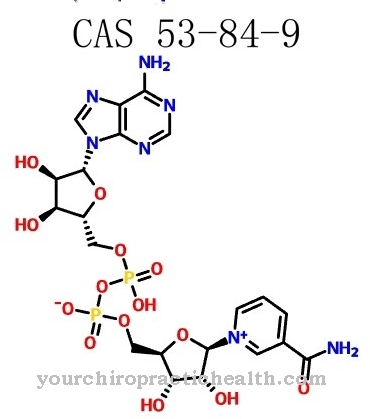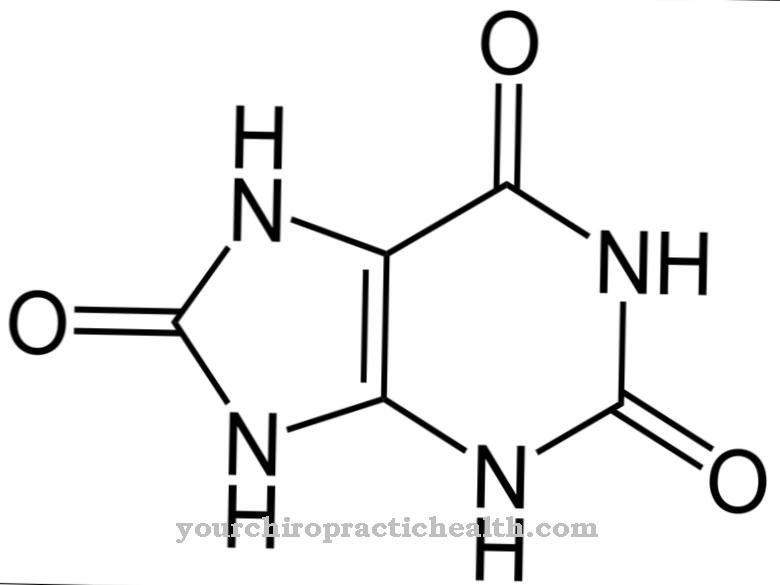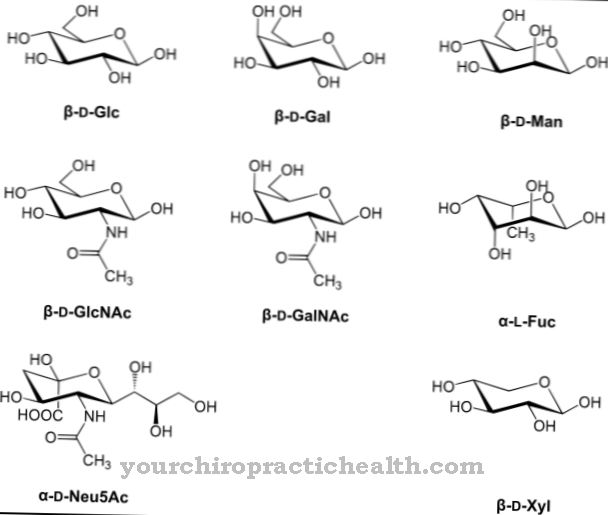The complex cellular and physiological processes in living beings require finely tuned regulation at the molecular level in order to ensure the adaptability of an animal or a plant, for example, to the habitat. For this purpose, there are numerous molecules that intervene in processes such as cell communication, metabolism or cell division. One of these molecules is protein Calmodulinwhich, with the help of calcium, influences the function of many other biologically active proteins
What is calmodulin?
Calmodulin is an intracellular regulatory protein that binds calcium ions. Due to its structure, it belongs to the group of EF-hand proteins. The shape of the calmodulin, which consists of 148 amino acids and is 6.5 nm long, resembles a dumbbell. The molecular mass of this protein molecule is about 17 kDa.
Due to its biological function in signal transmission within cells, calmodulin can also be classified as a second messenger, i.e. a secondary messenger substance which, however, is not itself enzymatically active. In the two spherical domains of the protein there are two helix-loop-helix motifs at a distance of 1.1 nm, to which a total of four calcium ions can be bound. This structure is known as the EF hand. The EF-hand structures are connected by hydrogen bonds between the antiparallel beta-sheets of calmodulin.
Function, effect & tasks
Calmodulin needs three to four bound calcium ions per molecule to be active. In the activated state, the calcium-calmodulin complex formed is involved in the regulation of a large number of receptors, enzymes and ion channels with a wide variety of functions. The regulated enzymes include the phosphatase calcineurin, which plays an important role in regulating the immune response, and the endothelial nitric oxide synthase (eNOS), which produces NO, which among other things is used for the relaxation of smooth muscles and thus for an expansion of the Blood vessels.
At low calcium concentrations, adenylate cyclase (AC) is also activated, at high calcium concentrations, on the other hand, the enzymatic counterpart, phosphodiesterase (PDE). In this way, a chronological sequence of the regulatory mechanisms is achieved: initially the AC sets a signal path in motion via the production of cyclic AMP (cAMP), later this is switched off again by the opponent PDE via cAMP degradation. However, the regulatory effect of calmodulin on protein kinases such as CaM kinase II or myosin light chain kinase (MLCK), which will be explained in more detail below, is particularly known.
The CAMKII can bind a phosphate residue to various proteins and thereby influence the energy metabolism, the permeability for ions and the release of neurotransmitters from the cells. The CAMKII is found in particularly high concentrations in the brain, where it plays an important role in neuronal plasticity, i.e. all learning processes. But calmodulin is also indispensable for movement processes. At rest, the concentration of calcium ions in a muscle cell is very low and calmodulin is therefore inactive. If the muscle cell is excited, however, calcium flows into the cell plasma and, as a cofactor, occupies the four binding sites on calmodulin.
This can now activate the myosin light chain kinase, which shifts the contractile fibers in the cell and thus enables muscle contraction. Other, less well-known enzymes that are under the influence of calmodulin are guanylate cyclase, Ca-Mg-ATPase and phospholipase A2.
Education, occurrence, properties & optimal values
Calmodulin occurs in all eukaryotes, which include all plants, animals, fungi and the group of amoeboid creatures. Since the calmodulin molecule in these organisms is usually structured in a relatively similar way, it can be assumed that it is an evolutionarily very old protein that originated at an early stage.
As a rule, calmodulin is present in relatively large amounts in the plasma of a cell. In the cytosol of nerve cells, for example, the usual concentration is around 30-50 µM, i.e. 0.03-0.05 mol / L. The protein is formed during transcription and translation using the CALM gene, of which there are three alleles known to date, which are referred to as CALM-1, CALM-2 and CALM-3.
Diseases & Disorders
There are some chemicals that can have an inhibitory effect on calmodulin and are therefore known as calmodulin inhibitors. In most cases, their inhibitory effect is based on the fact that they transport calcium out of the cell and thus remove it from the calmodulin, which is then only present in the inactive state.
These inhibiting substances include, for example, W-7. In addition, some psychotropic phenothiazine drugs inhibit calmodulin. As broad as the regulatory functions of calmodulin, so diverse are the conceivable defects and disorders when the protein can no longer be activated by the cofactor calcium and the regulated target enzymes are also less active. Inadequate activation of the CAMKII, for example, can lead to a reduction in neural plasticity, which forms the basis for learning processes.
Decreasing activation of the MLCK impairs the contraction of muscles, which can lead to movement disorders. Less activation of the enzyme calcineurin due to a calmodulin deficiency would affect the body's immune response and less activation of the eNOs would lead to lower NO concentrations. The latter mainly causes problems where otherwise the nitric oxide is supposed to prevent unwanted blood clotting and dilate the vessels for the purpose of better blood circulation. However, it should also be mentioned at this point that the calcium sensor Frequenin can take over the biological functions of calmodulin under certain conditions and thus replace the molecule.

















.jpg)







.jpg)


